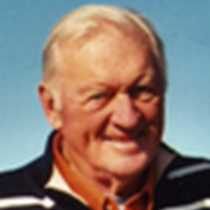Walla Walla, WA
In the 1860s Walla Walla was the largest city in Washington Territory. Gold rushes in the Blue Mountains and northern Idaho attracted visitors and commercial activity. As the gold and the dreams dissipated, the town’s population stagnated and the little community was left with only an agricultural base and shaky railroad line. Winter and spring wheat replaced the dreams of gold – and remain so today. Grain is seasonally challenged by asparagus, melons, sugar beets, corn and the famous Walla Walla sweet onion.
During the past 30 years a new industry has bloomed along the fertile plains and byways of the Walla Walla Valley: grape growing and wine making. In 2005 one can find more than 75 wineries within the valley. First class restaurants, including 26 brix, where Sea Bird guests dined at noon today, can be found where once only comfortable cafes and diners existed. The city’s stately Victorian homes, verdant city parks, wide streets and bubbling creeks are unchanged.
After taking Zodiac rides to the tiny Port of Walla Walla under the shadow of Wallula Gap on the Columbia River, Sea Bird guests visited the Whitman National Monument, a winery, the Fort Walla Walla Museum, and walked one of the country’s most successful small town Main Streets. The historian and naturalists narrated the motorcoach rides between sites.
An added ingredient in the day’s excursions was the clean, brisk air under blue skies. Deciduous trees were only a week or so from losing their foliage so the colors of orange, yellow and red were everywhere.
The Cayuse Nation once dominated the Walla Walla Valley. Among the nation’s premier horse breeders, the Cayuse spirit can still be found in sleek horseflesh roaming virtually every pasture. Pumpkins are sprinkled in fields next to fallow holdings that once nurtured asparagus and sweet onions. Walla Walla’s three colleges – Whitman College, Walla Walla College and Walla Walla Community College – attract year round cultural events. The economy is enhanced by the Corps of Engineers regional headquarters, a Veterans Administration hospital, the state penitentiary, and visitors like our Lindblad friends. In effect, this is a rich, scenic Valley with an exciting future.
In the 1860s Walla Walla was the largest city in Washington Territory. Gold rushes in the Blue Mountains and northern Idaho attracted visitors and commercial activity. As the gold and the dreams dissipated, the town’s population stagnated and the little community was left with only an agricultural base and shaky railroad line. Winter and spring wheat replaced the dreams of gold – and remain so today. Grain is seasonally challenged by asparagus, melons, sugar beets, corn and the famous Walla Walla sweet onion.
During the past 30 years a new industry has bloomed along the fertile plains and byways of the Walla Walla Valley: grape growing and wine making. In 2005 one can find more than 75 wineries within the valley. First class restaurants, including 26 brix, where Sea Bird guests dined at noon today, can be found where once only comfortable cafes and diners existed. The city’s stately Victorian homes, verdant city parks, wide streets and bubbling creeks are unchanged.
After taking Zodiac rides to the tiny Port of Walla Walla under the shadow of Wallula Gap on the Columbia River, Sea Bird guests visited the Whitman National Monument, a winery, the Fort Walla Walla Museum, and walked one of the country’s most successful small town Main Streets. The historian and naturalists narrated the motorcoach rides between sites.
An added ingredient in the day’s excursions was the clean, brisk air under blue skies. Deciduous trees were only a week or so from losing their foliage so the colors of orange, yellow and red were everywhere.
The Cayuse Nation once dominated the Walla Walla Valley. Among the nation’s premier horse breeders, the Cayuse spirit can still be found in sleek horseflesh roaming virtually every pasture. Pumpkins are sprinkled in fields next to fallow holdings that once nurtured asparagus and sweet onions. Walla Walla’s three colleges – Whitman College, Walla Walla College and Walla Walla Community College – attract year round cultural events. The economy is enhanced by the Corps of Engineers regional headquarters, a Veterans Administration hospital, the state penitentiary, and visitors like our Lindblad friends. In effect, this is a rich, scenic Valley with an exciting future.




